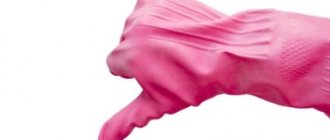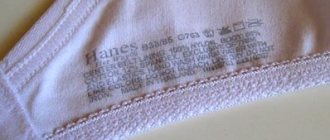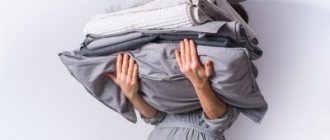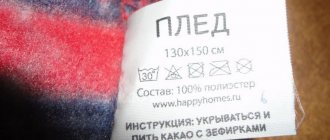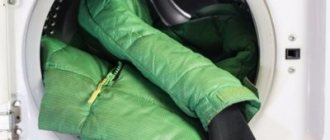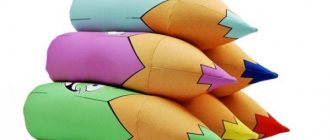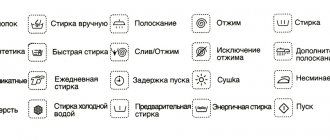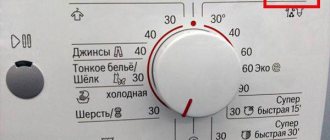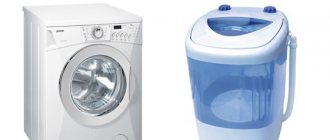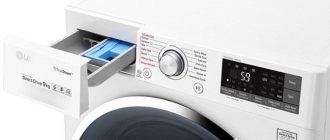When a child appears, parents have many questions. One of them is how to properly wash soft toys. Often the baby carries his soft friend with him everywhere, tastes him, drops him on the playground, and then tries to put him to bed with him. Meanwhile, dust, microorganisms, and mites accumulate on the surface of the toys, which can cause allergic reactions in the child. To protect your baby from contact with contaminants, it is important to pay special attention to the hygiene of soft toys.
Soft toys are constantly near children, so it is very important to keep them clean
Why wash soft toys?
In addition to the impact on people in families where asthma and allergies are present, having cute animals that haven't been washed for a significant period of time can also affect the health of the baby playing with them. To keep them clean and safe, parents are interested in the question: can they be washed in an automatic washing machine? The answer is on the product tag.
Before washing, you need to carefully examine the label on your child’s game; for some, over time, the printed elements disappear from constant games. You can look it up on the Internet or save a shortcut before handing over your velor bear or bunny to play with. Or compare with another thing similar to this. Look carefully at whether washing with disinfectants is allowed, whether dry cleaning is possible, and whether the item can be bleached.
Look carefully to see if it can be washed in hot water, can be tumble dried, or washed with disinfectants.
Preparing to wash soft toys
Examine the specimen from all sides; perhaps your bear’s paw is coming off or threads are sticking out. Sew it up before washing if you don’t want to see filler all over the washing machine, which will cause damage to the device.
On music components, batteries and devices for light or movement must be removed. Also, don’t forget to remove all pins, hairpins, scarves, etc.
Washing machine
After you have completed the repair and studied the label, you can start washing. For convenience, you can put your velor pet in a mesh bag. Follow the instructions on the label strictly so you don't have to throw it away later.
Precautionary measures:
- Avoid large items that will not fit in the drum
- Remove all batteries, music devices, and buzzers.
- Stuffing made from fiber filler, foam balls and paper is a contraindication.
- Always wash items separately from other items. Combining them with regular washing can spread bacteria from other items of clothing to your baby's item.
- Movable limbs (usually contain wooden joints)
- There are glued parts
When should you not use automatic mode?
Wash toys made of wool with caution (the fabric easily shrinks or stretches under the influence of even warm water), as well as those decorated with beads, rhinestones, beads and other elements that can be damaged during the process.
Toys with natural fillings (husks, feathers, down) should not be put into the machine. The only possible option is to tidy up only the “skin” by gutting the toy, and then stuff it again.
Also, singing or talking animals and dolls cannot be washed (with the exception of if the mechanism and batteries are located in a separate “pocket” and can be taken out).
How to wash teddy bears in the washing machine
Step #1:
- To avoid damage to the device and deformation of Teddy, place your pet in a laundry bag or pillowcase.
- This way the stuffing will definitely not end up in the washing machine.
- When a teddy bear is placed in a washing machine, it goes through three stages: washing, rinsing and spinning.
- In the first and last modes, the product may become deformed, which will lead to early wear.
To do this, choose a gentle mode for delicate fabrics.
Step #2:
- Add some baby powder and use the machine's gentle cycle.
- The rotation speed should be the lowest in the delicate mode.
- Baking powder or baking soda will help get rid of the unpleasant smell of your Teddy plush.
- And feel free to put it in the drum.
Step #3:
- Additionally, set the rinse mode to get rid of any remaining powder, washing gel and stain remover.
- To make the product soft and fluffy, add fabric conditioner.
- We remove the fluffy from the drum.
Disinfection
When washing toys at home, you need to periodically disinfect them, since mites and bacteria do not die at a temperature of about 30 degrees. Use one of the methods:
- Freezing. Small items should be placed in a bag and then placed in the freezer for 2 days. Most microbes cannot withstand low temperatures.
- Steam treatment. Steam to kill bacteria. To do this, use an iron with a steam function, a steam cleaner or a clothes steamer.
- Ultraviolet treatment. The treatment can be carried out using a quartz lamp or simply placing the products outside on a sunny day.
If you care about your child, wash toys regularly to prevent them from becoming a breeding ground for germs. By following simple rules, you can clean your products and maintain their attractive appearance.
Hand washing soft toys
There are specimens that are contraindicated for washing in household appliances. And if your child’s beloved friend is dear to you, wash it by hand.
But there are products that should not be immersed in water:
- With musical components that cannot be completely removed;
- Fragile, with loose threads or wear from extreme use;
- Leather;
Fill a container with water at approximately 30 °C. The product must be completely under water.
- Soak for 20-30 minutes, pre-soap and add powder. Use baby natural powders. The health of your little one depends on this.
- Wipe with a brush and baby soap.
- Hand wash to remove dirt.
- Rinse 2-3 times. Squeeze out the water
Superficial wet cleaning
When washing manually or automatically, the eyes of the toy may be erased or the body may be deformed. Superficial cleaning of plush animals will allow you to avoid such an outcome. In order to return the product to freshness and purity, you should:
- Lightly moisten the surface, for example, with a spray bottle.
- Apply a little foam or dishwashing detergent.
- Rub gently with a brush or soft cloth.
- Carefully wipe away any remaining foam with a clean cloth.
- Dry and comb the toy.
Folk remedies are also quite suitable for caring for products. Instead of the usual soap or powder for surface cleaning, you can use mustard powder. It is mixed with water in a one to one ratio and then applied to the material. The composition should be left until completely dry, and then carefully cleaned with a brush. This option is not suitable for fur that is too long. For “furry” animals, you should use lemon juice, vinegar, and hydrogen peroxide.
Drying
- We do not dry it in direct light. The color may fade. This may leave the ends of the fur rough or crusty, but you can comb them out with a comb.
- Don't be tempted to use the dryer - it's not worth the risk! They will lose their shape or the seams will not withstand such pressure.
- We dry it by hanging it with a clothespin. But do not dry the ears; if the toy is heavy, they may come off or stretch. Can be dried in a laundry net. Avoid direct sunlight so as not to dry it out and to prevent the color of the toy from fading.
- Heat from blow-drying or tumble drying can cause damage, especially to plastic parts.
Important Tips
To increase the efficiency of washing and make it safe, you must follow the following recommendations:
To destroy dust mites, the item must be washed at 60 degrees.- Boiling helps disinfect a product, but not all fabrics can withstand such treatment.
- You need to rinse the toy thoroughly so that no detergent remains in it.
- If a child suffers from allergies, then there is no need to use any special laundry detergents. Substances are used to wash his bed linen and clothes.
If you have to wash the toy very often, then it is better to do it manually. This cleaning option is gentle, so the item will last longer.
You will find maximum useful information about washing clothes and various fabric products here.
The finishing touch
We sew all the parts back, insert back the device for sound or movement. Don't forget to warn your baby to handle them carefully. Don't forget to brush it before giving your beloved Teddy back.
Adviсe
- Do not put ivy in the washing machine unless the tag indicates machine washable. Some labels indicate surface wash
- Using harsh chemicals may get rid of stains, but may cause discoloration.
- The freezer will perfectly rid you of parasites that live in dust particles.
- Once a week and each time as it gets dirty, we wash your child’s favorite;
- If your child is upset that you took the toy, tell him that you will be giving the toy a bath and ask if he wants to help you.
A teddy bear is a child’s best friend, so you need to take care of your friend’s cleanliness. Since they can pose a danger to the child's health.
Do not neglect cleaning the products, then they will be safe for your baby and will bring joy for a long time.
We destroy dust mites
In addition to washing, all baby supplies need periodic disinfection from germs. Does washing cope with this task? Alas, only partly, the temperature of the water in which it is permissible to wash is often not high enough to kill parasites.
You can disinfect a fur bunny in the freezer for a couple of days, carefully tying it in a moisture-proof bag. It is advisable to keep the fluffy giant on the balcony or in the yard in frosty weather.
It’s good if you always have an ultraviolet lamp at your disposal, you can carry out disinfection in any season.
If you ever manage to purchase a toy that doesn’t match the size, and it turns out that it clearly exceeds the drum of an automatic washing machine in its dimensions, then folk methods and achievements of the household industry will help out.
